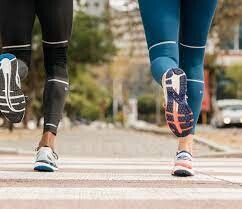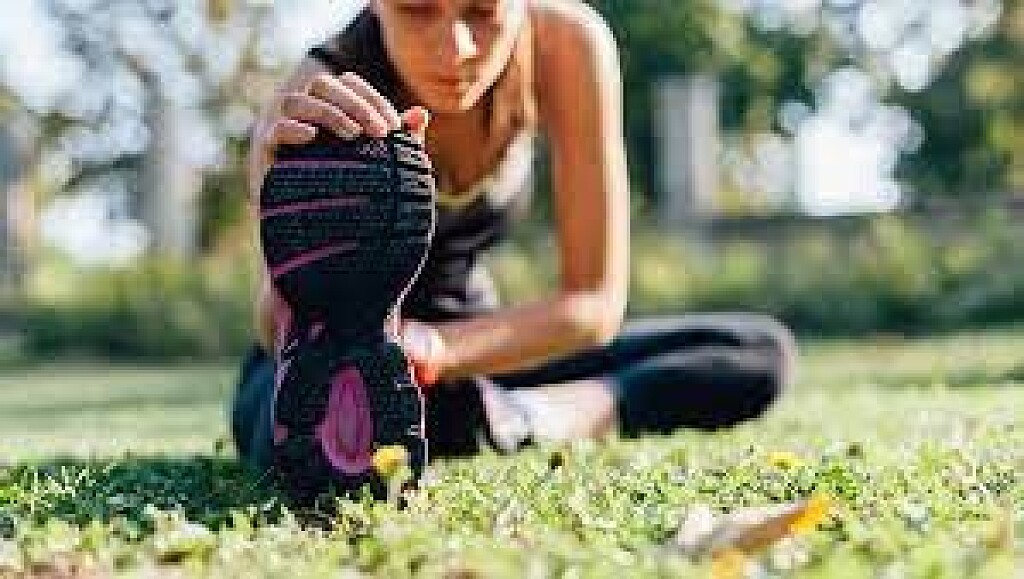Running News Daily
Running News Daily is edited by Bob Anderson. Send your news items to bob@mybestruns.com Advertising opportunities available. Train the Kenyan Way at KATA Kenya and Portugal owned and operated by Bob Anderson. Be sure to catch our movie A Long Run the movie KATA Running Camps and KATA Potato Farms - 31 now open in Kenya! https://kata.ke/
Index to Daily Posts · Sign Up For Updates · Run The World Feed
Will Stretching Help To Improve Your Running Performance?
It may surprise you to hear a physio say that whether or not you need to stretch is up to the individual. Some people seem to benefit a lot from stretching, while others seem to be able to run injury-free with no stretching at all.
There are numerous scientific studies that both prove and dispute the benefits of stretching. Our practical experience working at The Body Mechanic treating runners and cyclists every day, is that the majority of people will benefit from using some body management strategies, including stretching.
In general, runners tend to be tighter or stiffer than the general untrained population. This is because they load their muscles and tendons a lot more than sedentary people, and they move their joints repetitively through a relatively small range of movement. This repetitive loading tends to make muscles stronger, but also tighter.

If you are one of these typically tight runners, and you are currently running to a volume and standard that you are happy with, AND you are not getting any injuries – then you should keep doing whatever it is you are doing already. If your normal routine involves regular stretching, then keep it up. If your normal routine involves throwing on your shoes and heading out the door with no time set aside for stretching, then you probably don’t need to be stretching. In fact, for these rare individuals, starting to stretch could potentially increase the chance of getting injured.
If we make a comparison with someone who is at the other end of the flexibility spectrum, it will help you to understand more thoroughly how our bodies work. I have worked with yoga instructors who can put both feet behind their ears, or bend forward to touch their toes and put their head on their knees in the process. These people have bucket-loads of flexibility, yet some of them can’t run more than 2km without sustaining an injury. This is because they don’t have the appropriate level of strength and stability required to control their joints when running.

Like most things in life, there is a happy medium, which most people will benefit from. If you can gradually steer your body towards being in this “happy medium zone” then you should benefit from sustaining less injuries. Less injuries means more consistent training which means more enjoyable running and improved performance, so it is definitely a good thing to strive for.
Being the worlds most flexible or least flexible person is unlikely to help your running. Having hips, knees, ankles and a lower back with a good amount of flexibility, and an appropriate amount of strength and stability to match, will make a huge difference to your chances of running without injury.
Modern lifestyles, where the majority of the day is spent sitting in a chair (working, commuting, relaxing and socialising) is known to create some muscle imbalance in our bodies. This is even true for runners. Think about the number of hours involved. Our bodies are amazingly good at adapting to the stress that we place on them. If you run a lot (1 – 2 hours each day), but you sit at work for 6 – 8 hours each day, then unfortunately your body is going to adapt more to sitting than it is to running. The muscle imbalances created by sitting can contribute towards the likelihood of developing running injuries.
According to evolutionary scientists, our bodies are still primarily designed to be hunter-gatherers. For 2 million years we have evolved as hunter-gatherers to spend our days migrating (walking), foraging for food, hunting animals (running) or lying down to recover. Any time spent socialising was generally spent in a squatting position. This full range deep squatting position promotes a good range of movement in the lower back, hips, knees and ankles.
Look at any pre-school child here in Australia. If they are playing with their toys on the ground, they will squat in a comfortable and perfectly balanced manner. Yet ask a 10-year-old to squat and the majority of them will already find it uncomfortable having sat in a chair at school for too many hours a week.
So back to the initial question:
Will Stretching Help To Improve Your Running Performance?
It depends on the individual. If you suffer from injuries or niggles regularly then yes it could help. If you have reached a plateau in your performance and can’t get faster then yes it could also help. If you are completely satisfied with where you are at, then you probably don’t need to be doing anything different.
So What Stretches Should You Be Doing?
Again, this will depend on the individual. In another article coming very soon I will outline a number of stretches that we regularly prescribe at The Body Mechanic to help our clients keep their bodies in good running shape.
For now though, watch the video where I will demonstrate the “Hunter-Gatherer” Squat – if you haven’t manoeuvred yourself into this position for a long time, then be patient, just like training it could take many months for your body to gradually adapt to and fully benefit from the changes. Ultimately though it will help to improve the mobility in your lower back, hips, knees and ankles, which will help with your chance of becoming an injury-free runner.
by The Body Mechanic
Login to leave a comment




